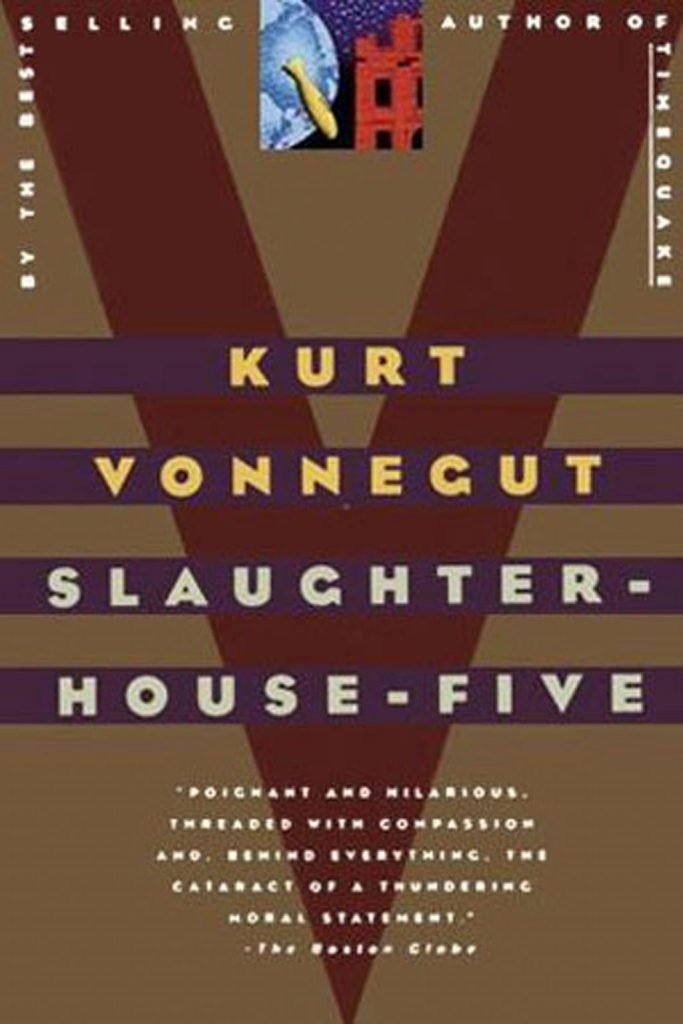Book Review: Slaughterhouse-Five
This has been a year of exploration when it comes to reading. A year ago I doubt I would have picked up a book by Ernest Hemingway. I have taken Kurt Vonnegut off the list of unread authors and placed him on the read list.

This archived article was written by: Brady Maynes
This has been a year of exploration when it comes to reading. A year ago I doubt I would have picked up a book by Ernest Hemingway. I have taken Kurt Vonnegut off the list of unread authors and placed him on the read list.
Oddly enough, I find Vonnegut’s writing style similar to Hemingway’s. Not that they are the same in every way. The biggest difference, not just because they both fought in a World War, though that probably greatly affected both of their writing styles. Vonnegut fought in World War II. Vonnegut’s books are based loosely on his life. He writes himself into some of his books.
In his book Bagombo Snuff Box: Uncollected Short Fiction, Vonnegut listed eight rules for writing a short story:
Use the time of a total stranger in such a way that he or she will not feel the time was wasted.
Give the reader at least one character he or she can root for.
Every character should want something, even if it is only a glass of water.
Every sentence must do one of two things—reveal character or advance the action.
Start as close to the end as possible.
Be a sadist. No matter how sweet and innocent your leading characters, make awful things happen to them—in order that the reader may see what they are made of.
Write to please just one person. If you open a window and make love to the world, so to speak, your story will get pneumonia.
Give your readers as much information as possible as soon as possible. To hell with suspense. Readers should have such complete understanding of what is going on, where and why, that they could finish the story themselves, should cockroaches eat the last few pages. –(Wikipedia)
In Slaughterhouse-Five, Vonnegut tells the story of Billy Pilgrim. Billy is a Chaplain’s Assistant during World War II. He is one of the only survivors of his company. He is quickly captured by the Germans at the Battle of the Bulge and marched to a train station. He, along with many other prisoners of war, is then shipped off to Dresden, Germany.
A fellow prisoner of war, named Roland Weary, dies. Before he dies, he tells another prisoner that it’s Billy’s fault. The prisoner, Paul Lazzaro, promises he will kill Billy sometime in the future, who knows when.
Billy’s mind, and body, is haphazardly time warping. One minute he is on the train going to Dresden, the next he is in his youth. Then he warps into the future. He warps back and forth.
He also believes that Tralfamadorians, aliens from another planet, abducted him. The aliens can see into the future, and convince Billy that he can’t change anything about his life. Because of this Billy believes he knows everything that will happen in his future. When he met his future wife, he knew he was going to marry her, because he had traveled into the future where they were already married.
When Billy reaches Dresden, he is taken to Slaughterhouse Number Five. They are put to work. Dresden is later bombed in one of the most devastating attacks during all of World War II. Billy, the other prisoners of war, and their German guards, survive by hiding in a cellar.
Many years after the war, Billy is the sole survivor of a plane crash. It is then that Billy believes the aliens abduct him. Billy’s wife is killed because of a car accident while he is in the hospital. After he is released from the hospital, Billy decides that he needs to tell anyone who will listen about the Tralfamadorians. He plans on going on a radio talk show, but it doesn’t work out.
Vonnegut’s work is fairly straightforward. It is also very satirical, and darkly humorous. He poses many questions to the readers. Some of them obvious, others not as much. Vonnegut sees himself as a freethinker, humanist and skeptic. While he doesn’t force these ideas on his readers, they are there, ready to be looked at.




